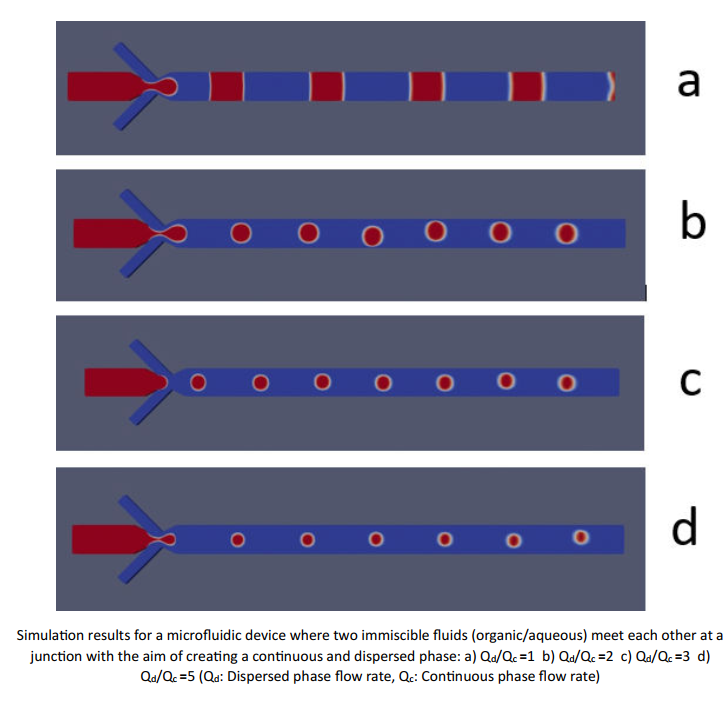Droplet-based microfluidics refers to the production and manipulation of droplets inside micro-devices such as microfluidic chips or capillary tubes. This method generates highly monodisperse droplets in the nanometer to micron range. Due to the high surface area to volume ratio obtained, lower heat and mass transfer resistances between the two phases result which may enhance reaction rates between the two phases. Droplet-based microfluidics, in contrast to continuous-flow systems, enables independent control over each droplet and a larger potential for higher throughput and scalability. As a corollary, droplet-based microfluidics has found emerging applications in several fields like biochemistry, physical chemistry, catalysis, nanoparticle generation, drug screening, DNA sequencing, cell analysis, and medical diagnostics, to name a few.
The present work incorporates a thorough study regarding designing, constructing, and operating a proper Flow-Focused microfluidic system for the production of aqueous droplets dispersed in an organic medium to be further used as a microfluidic reactor. The performance of the microfluidic device for some specific Flow-Focused designs is first simulated using OpenFOAM software. These numerical simulations have been realized using different fluid properties like density, viscosity, and interfacial tension, and also various operating conditions such as flow rate, Capillary number, and Weber number. To do the simulation of the microfluidic chips using the OpenFOAM software, the incompressibleVoF and incompressibleMultiphaseVoF solvers have been used. Comparing the results of different designs, the most efficient one has been chosen. In the second step, a microfluidic device based on poly(dimethyl) siloxane (PDMS) is constructed, and experimental tests are taken for the same controlling parameters used in the simulation study. We report a more than reasonable match between the experimental and simulation results. The outcomes of the present work may be used for the design of microfluidic reactors where the reaction takes place in the interface of the dispersed and continuum phases.


